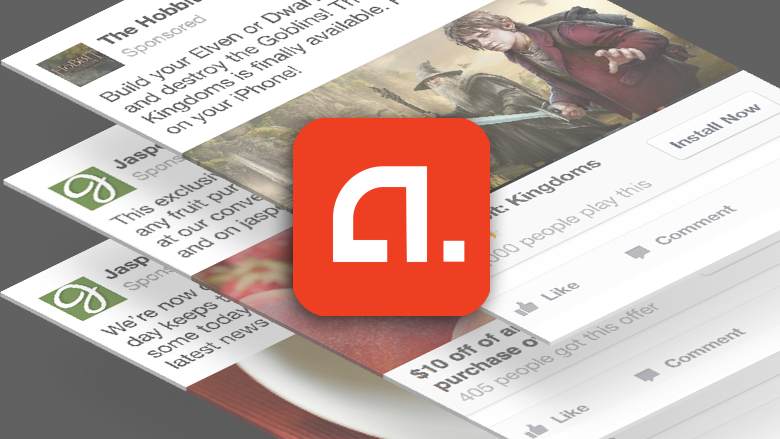DataLead: “The cost of attracting a user depends on the talent of the media buyer”
DataLead has launched the Appness platform, a platform for direct interaction between media buyers and advertisers interested in attracting traffic from Facebook. Why such a service is needed, how it works and why buying traffic from Facebook on your own is not the most effective solution, the creators of Appness themselves told us.
The questions were answered by Evgeny Marchenkov, Director of Sales and Marketing at DataLead, and Alexander Ilinsky, Director of Technology at DataLead.
It is clear that everyone knows your company. But let’s still talk about what kind of company it is and what its history is.
Evgeny Marchenkov
Evgeny Marchenkov: Our company is called DataLead, and it employs 60 people. We do a very simple thing: we help our clients attract mobile users. At some point, we were number 1 in Russia in terms of purchases on myTarget, but later our focus shifted, and of the Russian customers we had only the biggest ones: Avito, Lamoda and other so-called “big guys”.
Now we mainly work with international clients. For example, last year it was Chinese companies. The same year is dedicated to export customers – that is, those who sit in one country and, as part of their work, go beyond this country to the world (for example, they sit in Minsk and go to America).
We have always been a media buying company, but now our focus has shifted significantly towards a technology company, so we are actively creating our own product, which is called Appness. This is a marketplace for working with Facebook.
Why did you start developing a new brand? After all, everyone knows DataLead well, so why couldn’t we leave the old brand and not work on promoting the new one?
Evgeny Marchenkov: The essence is simple: DataLead is a media buying team. And the product that we produce, even if it is connected with media buying, is not limited to it at all. DataLead is one team, and Appness is a platform for many such teams. It is for this reason that we decided that we needed a separate brand.
In addition, the association with DataLead is as follows: this is a strong team that knows how to buy traffic from Facebook and Google. We do not want to transfer this association to Appness, because the platform is still independent of the DataLead company itself, it is not part of it. In Appness, DataLead is represented only as a traffic buyer. But there are also many other teams with their own experience, their own approaches.
Alexander Ilinsky
Alexander Ilinsky: In addition, DataLead is the company’s brand, and Appness is the company’s product. This is their big difference.
Let’s be a little more specific now: what is Appness?
Evgeny Marchenkov: This is a kind of marketplace. That is, a market where there are advertisers on the one hand, and media buyers or arbitrageurs on the other. Unlike all existing models today, an advertiser comes to our platform not to buy traffic and installations, but to buy exactly what he needs for his business. To buy the result.
Roughly speaking, if his earnings model is based on subscribers, then he comes and says: “I want to pay for subscribers in the app.” So we have a client who is willing to pay $16 per subscriber in his application.
That is, on the one hand, there is a platform with advertisers, each of whom wants to buy a result for himself. And on the other hand, there are a huge number of teams that know how to buy advertising, optimize it and adjust to the client’s KPIs: try, for example, to gain subscribers, install or achieve some events in the application. Thus, we become an add–on to Facebook, which helps two parties to interact – advertisers and media buyers.
The website says that this is “the first such solution in the world.” It seemed to me that there were already solutions working for the result.
Evgeny Marchenkov: The CPA principle itself, of course, is not new, and there are many agencies that have worked on it. And that’s fine. Our difference is that we do it on Facebook and allow media buyers to work with all the tools and algorithms for optimizing this network that were previously unavailable.
Facebook used to be a third-party media buyer, even if he found an offer in the partner network where it was possible to pour traffic from Facebook, he could often do it only by links through the tracking of the affiliate program itself. Ie, for Facebook, this process looked like a person needed to optimize the purchase of traffic for transitions to the site instead of being optimized for installations or other events in the app. As a result, with the help of Appness, a media buyer not only gets access to exclusive Facebook offers, but can also buy traffic on average 2-3 times cheaper than if he bought it for an offer via an affiliate link.
How necessary are such add-ons? Is it really impossible to go to Facebook, which earns tens of billions of dollars a year from advertising every year, and buy from it directly? Why contact other parties?
Evgeny Marchenkov: That’s right. Of course, you can go directly to Facebook. However, when we talk about buying traffic on this network, several stages are implied. And the first of them is the creation of creativity.
There is some kind of expertise (or “local experts”, as we call them) – these are media buyers who are located all over the world. Let’s say someone lives in Turkey and knows the local market, or someone lives in Singapore and knows the Asian market in general, or, conversely, ideally buys traffic in America.
And ideally buying means creating banners with high conversion for various verticals, being able to segment users and select a way to purchase advertising on Facebook in such a way that on the one hand, you achieve the key indicators of the client, and on the other hand, you yourself remain in the black. There are many such experts around the world, and we collect them within the framework of one platform.
If the company itself goes to Facebook… Although how will she do it? After all, there is no magic “give traffic” button. If you come and say: “Give traffic!”, then the answer will be as follows: “OK, draw a banner.” Someone has to draw a banner! And this point is important: obviously, someone has to segment the audience. And a lot depends on how it will be done. But there must also be an abstract “someone”, this is an internal team. She must know all the markets of the world, and this is impossible.
We expand the internal team of any client. That is, he has his own team, and we give him access to 500 other teams with local expertise from around the world.
And how much more expensive will this add-on cost to a potential client, when compared with buying traffic directly from Facebook?
Evgeny Marchenkov: The moment you are talking about really exists. But I smiled now, because in our case everything happens a little differently. Suppose you are an advertiser who comes to the market and says: “I want users who will reach the fifth level. I only pay for them. In dollars.” That’s it, you don’t care about anything else. How much the platform will take for itself, how much the media buyer will receive is no longer your problem. The platform is interesting because there is no concept of a test for the client, there is no concept of testing the platform. He just comes and says, “I want to. Ship me according to my business model what I need to be in the black.” If this is a game, then paying users are needed, if a subscription, then subscribers are needed. It all depends on the business model. At the same time, the client does not risk anything.
On the other hand, unique offers appear. There is a media buyer – he does not have the opportunity to work with any of the big clients on Facebook. And then – once! – and suddenly there is such a chance! He risks his money by launching ads. It can go as a minus, if the KPI has not been fulfilled, or as a plus. And then he starts buying traffic. Answering your question about whether the advertiser is losing money here – no, he is not losing anything. He pays for the result as much as he needs.
If your platform changes the market, and many solutions like yours appear, will the user’s purchase price drop much? Or, on the contrary, will it grow?
Evgeny Marchenkov: It will definitely change the market. Already cheating. Facebook, Facebook, Google, or Facebook and Google in-house, all those clients who have never worked with anyone on Facebook, on their own, say today that they are ready to work with us on Facebook. And Google, we hope, will also be given to us.
Okay, this is probably too abstract a question. Look, let’s say there is some company that is developing a three-in-a-row or another clone of Game of War. She has two options – either she will traditionally compete with Game of War for users and buy traffic, or she will go to you and pay for the target player. How much will she pay in the first case and how much in the second?
Alexander Ilinsky: The cost of attracting a user depends on the talent of the media buyer. If the media buyer was able to find an approach that will give more clicks for the same number of impressions and provide a better conversion into a business result for the client, then the cost of the target action will be less. Therefore, the more access you get as a client to the talents of different media buyers, the more the cost should decrease. Simply because there will be someone who does it cheaper than those who have done it before. Accordingly, the bar may drop. On the other hand, if we talk not about the market of large companies, each of which has something on Facebook, but about the market of small companies, then we believe that our platform will give access to procurement to those people who did not think much about it before: because they do not know how, because they need a budget on their teams and so on. We give people the opportunity: come, announce the result, and someone will buy for you. All this instead of searching, walking around the market, comparing and so on. And the risks will also be less. Therefore, due to the increase in companies that will be able to enter this market due to a decrease in the entry threshold, prices may increase. Simply because more companies will start competing for the same traffic.
Evgeny Marchenkov: Look, you can tell this story a little differently. I am a developer and decided to buy traffic. In any case, I will buy it from all possible sources, because I need it. And compete with Game of War as well. The question is, how exactly will I compete? Is it due to the fact that I have 1-2 people sitting who are trying to come up with new creatives and launch them on Facebook, or is it due to the fact that I have 500 such people? Of these 500, clearly some number will be able to buy well, plus both for themselves and for the client, if, of course, there are adequate payment conditions.
Therefore, we think that Appness is very well suited for mobile app creators: you don’t need your own team to purchase traffic on Facebook. The team is risking your money in any case. And then, it turns out, you come and say: “I don’t need a team on Facebook, I have 500 such teams, here are the KPIs for you, buy from them.” It’s just that if KPIs are unrealistic, then no one will buy anything. But then you will also see that 500 people have tried, no one has bought anything. Perhaps you should think about the fact that you are doing something wrong: it is unlikely that all 500 people turned out to be profane.
By the way, what is the general trend in traffic purchase prices?
Evgeny Marchenkov: Prices are jumping very much. It depends on external factors. Pokemon GO came out – everything became expensive on Facebook. Students have returned – this audience has become cheaper because it has returned and started using applications. Or, on the contrary, big advertisers came out, and everything became expensive exactly for the segment they are targeting. It’s a market, it’s alive. And supply and demand fluctuate greatly.
Alexander Ilinsky: If we talk about some global trend, the cost of traffic continues to grow. This is due to the fact that people are learning, they are better and better able to earn money from their audience, new monetization mechanisms and new schemes are emerging.
But if a new scheme has appeared, then it is logical that the price will fall. Because since the new scheme is more profitable, there are fewer risks, inefficient traffic providers fall off.
Alexander Ilinsky: I’m talking more about the mechanisms of monetization of applications. The more you know how to earn, the more LTV you have, the more you can pay for your traffic. And then the usual process begins, when the application learns to earn more, starts buying more traffic, wins the auction, traffic grows, and others begin to catch up with them.
Another pressing issue. You just said that your service allows those companies to access Facebook that didn’t think about it before. How much money to cook for this? I understand that it depends on the product, on the genre. But there must be some kind of fork. What expenses should an average team in the gaming market prepare for? What is the fork of spending per day, per month?
Evgeny Marchenkov: It’s simple: now services are developing that allow you to attract money under the business model. Roughly speaking, you have a business model, you buy users for $1 and earn $1.20 from each user. You have $10 thousand to start. Quickly enough, this budget can grow to $ 100-200 thousand, despite the fact that the relevant financial partners are simply involved. You come to them, post KPIs that say you have a business model, and you get partners who give you money. They study your business model, and if it converges, they give you money and do not take a share, but instead take a certain percentage of the profit, while taking all the risks themselves. This is the so-called factoring. Therefore, the question of money for marketing is not worth it at all if you have a normal business.
What else can the new service offer?
Evgeny Marchenkov: We also have creative control. There are two sides. It is important for advertisers to see creatives. After all, as it turns out: there are some buyers, they buy. And what they buy, how they buy – the advertiser does not understand. Suddenly they write unrealistic prices on banners or promise functions that do not exist? We also give the advertiser the opportunity to see which creatives are used by the buyer. And those that do not suit him, he can ban – all buyers will immediately see that such a creative cannot be used.
However, we protect buyers by not showing which creative is the most effective and brings the most traffic. That is, on the one hand, the advertiser controls that the buyer makes beautiful correct banners corresponding to the guidelines and so on. On the other hand, the buyer is protected because the advertiser does not know which creatives actually work well. We protect all the creatives and know-how of buyers, but at the same time we give advertisers the opportunity to be confident in the safety of the brand.
I see. Thanks for the interview!


